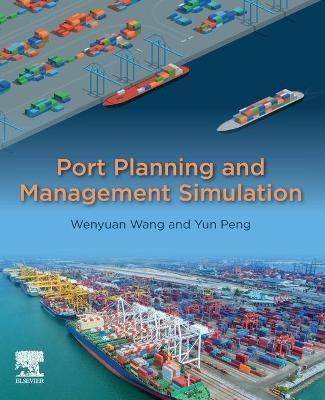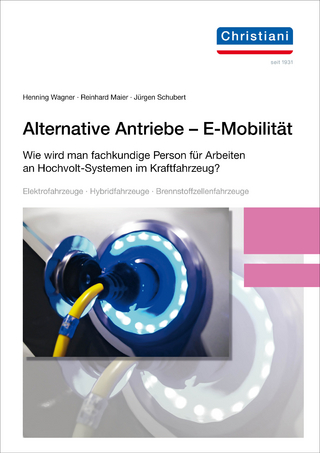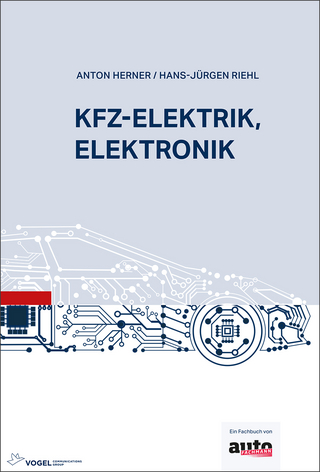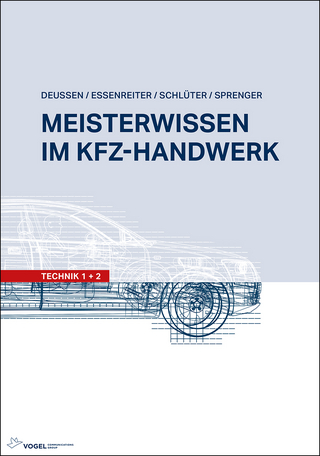
Port Planning and Management Simulation
Elsevier - Health Sciences Division (Verlag)
978-0-323-90112-3 (ISBN)
The book describes the water, land, collecting and distributing components of the port system, focusing on management, development, and risk mitigation. It examines the key challenges based on discrete system simulation theory that is less affected by local or national regulations. It compares various simulation scenarios for optimal port operational strategy. It quantifies port emissions, analyzes the impact of different reduction strategies, and presents operational strategies for green port planning developmentmand management.
Port Planning and Management Simulation provides guidance for carrying out deep analysis in a complex and dynamic system, providing an integrated solution framework based on simulation techniques for improving efficiency and cost savings of the port system.
Wenyuan Wang is Associate Professor of Coastal and Offshore Engineering at Dalian University of Technology. She researches port planning, logistics, simulation, and structure optimization. Wang has published more than 110 peer-reviewed papers and participated in several port planning, port simulation, and smart port research projects. Yun Peng is Associate Professor of Coastal and Offshore Engineering at Dalian University of Technology. Her research spans port planning and logistics, smart port, and port intelligent decision-making. Peng has published more than 50 peer-reviewed papers and participated in several port planning and simulation research projects.
Part 1 Port planning and management and simulation application 1. To port planning and management from three aspects 2. The simulation application in port
Part 2 Water area planning, operation, and safe navigation 3. An introduction to ships’ operating system 4. How simulation techniques can help provide decision support for water area planning 5. The influences of different operation strategies 6. How simulation can be used for safe navigation
Part 3 Land area planning and operation management 7. Introduction to the land area operating system 8. Land area function layout involving the layout site and the scale for different components 9. Traffic impact analysis
Part 4 Port-centric collecting and distributing system: planning and management 10. Traffic flow under port collecting and distributing network context 11. Planning of interchange scheduling based on the simulation-based dynamic programming method 12. Management perspective on the application of simulation techniques in optimization
Part 5 Emission reduction and alternative energy applications 13. An introduction to emission reduction methods and alternative energy applications used in green ports 14. Simulation for emission reduction strategies 15. Alternative energy applications
Part 6 Conclusions and Discussions 16. Applying simulation in the port planning and management with an appropriate discussion 17. Future work
Part 1 Port planning and management and simulation application 1. To port planning and management from three aspects 2. The simulation application in port
Part 2 Water area planning, operation, and safe navigation 3. An introduction to ships’ operating system 4. How simulation techniques can help provide decision support for water area planning 5. The influences of different operation strategies 6. How simulation can be used for safe navigation
Part 3 Land area planning and operation management 7. Introduction to the land area operating system 8. Land area function layout involving the layout site and the scale for different components 9. Traffic impact analysis
Part 4 Port-centric collecting and distributing system: planning and management 10. Traffic flow under port collecting and distributing network context 11. Planning of interchange scheduling based on the simulation-based dynamic programming method 12. Management perspective on the application of simulation techniques in optimization
Part 5 Emission reduction and alternative energy applications 13. An introduction to emission reduction methods and alternative energy applications used in green ports 14. Simulation for emission reduction strategies 15. Alternative energy applications
Part 6 Conclusions and Discussions 16. Applying simulation in the port planning and management with an appropriate discussion 17. Future work
| Erscheinungsdatum | 05.11.2021 |
|---|---|
| Verlagsort | Philadelphia |
| Sprache | englisch |
| Maße | 191 x 235 mm |
| Gewicht | 810 g |
| Themenwelt | Sachbuch/Ratgeber ► Natur / Technik ► Fahrzeuge / Flugzeuge / Schiffe |
| Technik | |
| ISBN-10 | 0-323-90112-3 / 0323901123 |
| ISBN-13 | 978-0-323-90112-3 / 9780323901123 |
| Zustand | Neuware |
| Informationen gemäß Produktsicherheitsverordnung (GPSR) | |
| Haben Sie eine Frage zum Produkt? |
aus dem Bereich


